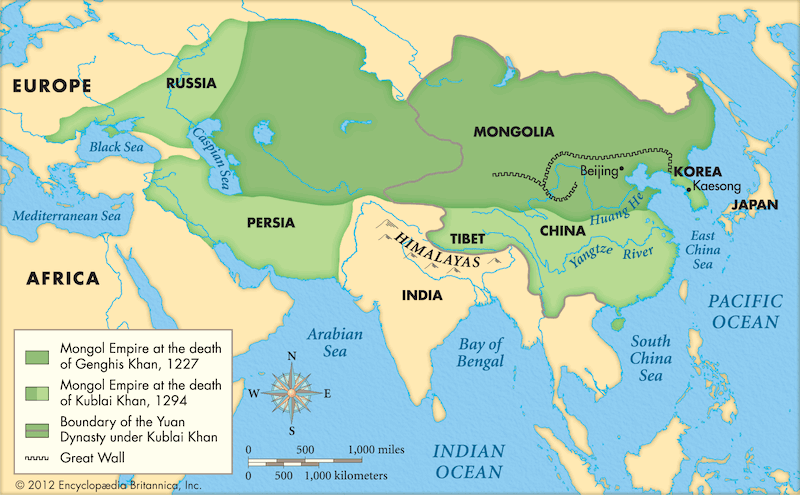Genghis Khan Dynasty
Episode #5 of the course “Most powerful families in history”
In the 13th and 14th centuries CE, life was dangerous and treacherous among the nomadic horseback-riding peoples on the steppes of central Asia. Skilled warrior tribes fought and stole from one another. Violence was frequent in families, as members murdered one another for power. Into this world was born Temüjin, whose life included being kidnapped and held as a slave, killing his half-brother, and executing rivals (including his best friend) and taking their clan members into his own.
In 1206, Temüjin unified the Mongol tribes when he was crowned “Genghis Khan” (which means “Greatest King”) and solicited alliance from the other Khans. He began campaigns to claim land for the Mongol Empire, eventually creating the largest contiguous empire in history. Lands conquered and ruled by the Mongols totaled roughly 11 million square miles—about the same size as the continent of Africa—and stretched from Vietnam to Syria.
 Genghis Khan
Genghis Khan
The Mongol rulers were known to assimilate the cultures of the vanquished, sparing the lives of craftsmen and engineers who could bring new technologies to their armies. They also practiced religious tolerance and enacted governmental functions, including a national census. Mongolian battle tactics were fierce; they seemed invincible. The Ming dynasty Chinese rulers were so afraid of the Mongols that they added new portions to a centuries-old wall to protect their lands from invasion. Today, this is the Great Wall of China.
 Mongol Empire
Mongol Empire
After the death of Genghis Khan, there was fighting among his four sons, and the empire fractured. Still recognized as one group, the Mongols again fought for power among themselves. Their land holdings began to erode with their first military loss in 1260. Genghis Khan’s grandson, Kublai Khan, attempted for years to re-unify the dynasty, but he died in 1294 without achieving that goal.
Share with friends

